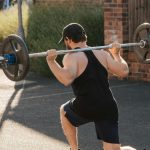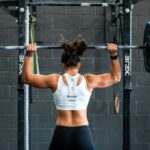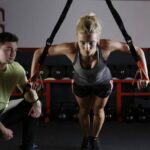Engaging in bodybuilding after the age of 60 can be a transformative endeavor for both physical health and overall well-being. As individuals age, maintaining muscle mass and bone density becomes crucial for prolonging an active lifestyle. Bodybuilding, which emphasizes muscle growth and strength training, can be tailored to meet the needs of those in their later years. Setting realistic goals is essential in this journey, ensuring that the approach to bodybuilding is both effective and safe. A focus on gradual progress, rather than attempting to match the capabilities of younger athletes, is important for sustained motivation and long-term success.
Lifestyle choices play a critical role in the pursuit of bodybuilding after 60. It is paramount for older adults to seek medical clearance, especially if there are pre-existing health conditions. Listening to the body’s signals during exercise is equally important, as it aids in avoiding overexertion and injury. Building muscle at this stage requires a holistic approach that includes a balanced diet, sufficient rest, and an exercise regimen that incorporates progressive resistance training. Compound exercises such as squats and bench presses are particularly effective for recruiting multiple muscle groups, translating to greater functional strength and muscle gains.
Motivation for bodybuilding can stem from various sources—be it the desire for improved health, increased strength, or enhanced mobility to enjoy daily activities. The key is to find personal motivation that drives a consistent and enjoyable fitness routine. With the right mindset and approach, bodybuilding after 60 can not only bolster physical health but can also be an empowering act that challenges the conventions of aging, providing an invaluable sense of accomplishment and vitality.
Understanding the Aging Process and Bodybuilding
As individuals age, changes in muscle mass and the body’s response to exercise necessitate adaptations in bodybuilding routines. Understanding these shifts is crucial for maintaining health and building muscle after 60.
Impact of Aging on Muscle Mass
Sarcopenia, the decline of muscle mass and strength, is a natural part of aging, affecting everyone to some degree. It can begin as early as the fourth decade of life and can result from both biological aging and lifestyle factors. As muscle fibers decrease in number and shrink in size, the body’s resting metabolic rate also slows, potentially leading to increases in body fat percentage.
Benefits of Building Muscle After 60
Despite the challenges posed by aging, building muscle after the age of 60 is both possible and beneficial. Resistance training can combat sarcopenia, enhance muscular strength and endurance, and stabilize the metabolic rate. Furthermore, increased muscle mass can contribute to better balance and coordination, reducing the risk of falls, and promote a healthier overall body composition.
- Muscle Mass Maintenance: Engaging in regular strength training can help older adults preserve and even build muscle tissue.
- Metabolic Advantages: Maintaining muscle mass can aid in sustaining a healthier metabolism, aiding in weight management.
- Injury Prevention: Stronger muscles and improved balance can decrease the likelihood of falls and related injuries.
- Quality of Life: Enhanced strength and fitness may lead to greater independence and an improved sense of well-being.
Setting Up Your Bodybuilding Routine
Establishing a bodybuilding routine for those over 60 requires careful consideration of workout frequency and the creation of a balanced plan to ensure safety and effectiveness.
Determining Your Training Frequency
An individual should consider their current fitness level and recovery time when deciding how often to train. Beginners may benefit from two to three sessions per week, allowing ample recovery time between workouts. Consistency in the chosen routine is key to building muscle and strength safely.
Recommended Training Frequency:
- Beginners: 2-3 days per week
- Intermediate: 3-4 days per week
- Experienced: 4-5 days per week (with adequate recovery)
Creating a Balanced Workout Plan
A balanced workout plan includes a variety of compound exercises targeting multiple muscle groups for overall muscular development and function. The workout volume should be adjusted to match the trainee’s experience, with a focus on progression.
Sample Workout Plan for Beginners:
- Day 1: Upper Body (Push focus)
- Bench Press: 3 sets of 8-10 reps
- Overhead Press: 3 sets of 8-10 reps
- Day 2: Lower Body
- Squats: 3 sets of 8-10 reps
- Deadlifts: 3 sets of 8-10 reps
- Day 3: Upper Body (Pull focus)
- Pull-ups/Assisted Pull-ups: 3 sets of 8-10 reps
- Rows: 3 sets of 8-10 reps
One should ensure to include a mix of pushing and pulling movements, along with leg exercises, to create a well-rounded program. It’s important to start with lighter weights to avoid injury and gradually increase the intensity.
Essential Exercises and Techniques
To effectively build muscle after the age of 60, it is crucial to focus on exercises that provide maximum benefit. These include compound exercises that work multiple muscle groups simultaneously, and incorporating multi-joint movements into your regimen.
Mastering Compound Exercises
Compound exercises are fundamental for anyone looking to gain muscle, especially in their 60s. They target several muscle groups at once, leading to more significant strength gains and time efficiency. For seniors, the emphasis should be on maintaining proper form to prevent injury.
- Squats: Engages the core, glutes, hamstrings, and quadriceps.
- Deadlifts: Works the back, glutes, hamstrings, and forearms.
- Bench Press: Strengthens the chest, shoulders, and triceps.
Beginners should aim for lighter weights with higher repetitions, around 8-10 reps per set, gradually progressing in weight while maintaining form.
Incorporating Multi-Joint Movements
Multi-joint exercises are beneficial as they mimic daily activities, improving not only strength but also functional fitness. They can be performed using free weights or machines, but free weights are often preferred for the added stability challenge and the more natural range of motion.
- Pushups: Activate the chest, arms, and shoulders with core stability.
- Lunges: Strengthen the lower body and improve balance.
When selecting exercises, prioritize those that safely challenge coordination and strength, like using free weights over machines when possible. However, machines can be useful for controlling movement patterns and reducing the risk of injury. It’s important for individuals to consult with a fitness professional to ensure exercises and techniques are tailored to their fitness level and health status.
Nutrition and Supplementation for Muscle Growth
Proper nutrition and the strategic use of supplements are critical for individuals over 60 who are looking to build muscle. Carefully balancing diet and supplementation can optimize muscle protein synthesis and support overall muscle health.
Protein and Muscle Protein Synthesis
Protein is the building block of muscle, making it essential for muscle repair and growth. Adequate protein intake stimulates muscle protein synthesis, the process by which the body repairs and rebuilds muscle fibers. For individuals over 60, a higher protein intake may be necessary to offset age-related muscle loss.
Recommended Protein Sources:
- Lean meats
- Fish
- Dairy products
- Legumes
- Nuts
Daily Protein Targets: It’s suggested that older adults aim for about 1.0 to 1.2 grams of protein per kilogram of body weight per day.
Understanding the Role of Supplements
Supplements can play a supportive role in the diet of an individual looking to gain muscle, especially when dietary intake does not meet nutrition needs.
Key Supplements Include:
- Creatine Monohydrate: Helps to increase muscle mass and improve exercise performance.
- Vitamin D: Supports muscle function and works in tandem with calcium for bone health.
- Omega-3 Fatty Acids: Beneficial for heart health and can also help to improve muscle growth response.
- HMB (β-Hydroxy β-Methylbutyrate): May help to reduce muscle protein breakdown.
A balanced diet often provides sufficient nutrients, but supplements are beneficial when dietary sources are inadequate or to meet increased demands. Always consult with a healthcare provider before starting any new supplement regimen.
Recovery Strategies for Seniors
Recovery is an essential component of bodybuilding for seniors. It involves allowing adequate rest and adopting measures to prevent injuries, ensuring workout recovery is efficient and effective.
Rest and Recovery Time
Adequate rest is crucial for seniors engaging in bodybuilding. Muscles need time to repair and strengthen following a workout. Seniors should allow for:
- 48-72 hours of recovery time between strenuous workouts.
- At least 7-9 hours of sleep per night to facilitate muscle repair and hormonal balance.
During rest days, light activities like walking or stretching can promote circulation without straining muscles, aiding in faster recovery.
Avoiding Injuries and Managing Pain
To prevent injuries, seniors should:
- Start workouts with a warm-up to prepare muscles and joints.
- Incorporate low-impact exercises to reduce stress on joints.
For pain management, they can:
- Use ice packs to ease acute muscle or joint pain immediately after a workout.
- Engage in restorative activities such as yoga or tai chi that improve flexibility and reduce muscle tension.
Senior bodybuilders should always listen to their bodies and consult with healthcare providers about any persistent pain or discomfort.
Monitoring Progress and Adjusting Goals
Building muscle at an advanced age requires a keen understanding of one’s body and the realistic progress that can be achieved. Effective monitoring of strength and size as well as setting achievable goals are key to success in bodybuilding after 60.
Assessing Strength and Size Improvements
Frequency: Muscle strength and size should be assessed regularly, but not too frequently to avoid discouragement due to natural fluctuations. A recommended timeframe for re-assessment is every 4-6 weeks.
- Tools for Measurement:
- Use a tape measure for muscle size.
- Record maximum lifts for strength.
- Employ repetition tests with a fixed weight.
Research & Adaptation: One should stay informed on the latest findings about strength training for older adults. Research may provide insights into effective exercises and recovery times that enhance size and strength without increasing injury risk.
Setting and Updating Realistic Targets
Initial Goals: Start with modest targets to create momentum and confidence. For instance, an initial increase of 5% in muscle strength within the first two months can be both challenging and attainable.
- Short-term Goals: They might involve mastering a particular lift or adding a small amount of weight to a current exercise.
- Long-term Goals: Should focus on the broader picture of health and fitness. This can include a series of short-term goals that compound over time to result in significant improvements.
Progress Review: Regularly review whether the set goals align with actual progress.
- Tables for Clarity:
- Create a progression table that tracks weekly or monthly improvements in strength and size.
- Adjust workout intensity and volume based on progression data.
Critical to the process of setting realistic targets is an understanding of the body’s capacity for adaptation at a more mature age. This awareness ensures that one’s goals are challenging, yet attainable, reflecting both ambition and a pragmatic recognition of the body’s changing capabilities.
Lifestyle and Additional Activities
While bodybuilding at 60 focuses primarily on strength training, a comprehensive approach includes cardio and flexibility training, along with specific lifestyle choices that enhance muscle growth and overall well-being.
Incorporating Cardio and Flexibility Training
Bodybuilders over the age of 60 should incorporate cardiovascular exercises such as walking or swimming into their routine. These activities support heart health and can help with maintaining a healthy weight. Low-impact cardio is particularly beneficial, helping to minimize stress on the joints while still providing the necessary stimulus for health.
Flexibility training is equally important. Practices like yoga not only improve flexibility but also aid in recovery and reduce the risk of injury. They should schedule flexibility workouts 2-3 times a week, focusing on major muscle groups that are involved in their strength training regimen.
Important Lifestyle Choices for Bodybuilders
Key lifestyle choices directly impact a bodybuilder’s progress and overall health. Proper nutrition, including sufficient protein intake and hydration, supports muscle repair and growth. Adequate rest is crucial; muscles need time to recover and grow, so ensure 7-9 hours of quality sleep per night.
Maintaining motivation is essential. Bodybuilders should set realistic goals and track their progress. Celebrating small victories can provide the mental boost needed to continue with their training program. Building a support network with fellow bodybuilders can also serve as a source of motivation and encouragement.








